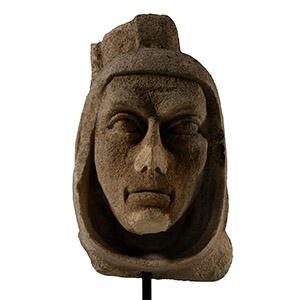Home > Auctions > 5 - 9 September 2023
Ancient Art, Antiquities, Natural History & Coins
Auction Highlights:
Private collection formed in Europe in the 1980s.
Westminster collection, central London, UK.
Accompanied by a specialist metal analysis report.
This lot has been checked against the Interpol Database of stolen works of art and is accompanied by search certificate no.11896-203749.
Cf. Magnus, B. et al., Bird, Beast and Man in Nordic Iron Age Art, Vol.2, Koln, 2005, items 77, 106, 239 (chain), Kongl. Vitterhets Historie och Antiqvitets Akademiens Månadsblad, 1895 (pendant).
Found whilst searching with a metal detector in Ryedale, North Yorkshire, UK, on Sunday 5th February 2023 by Chris Ulliott.
Accompanied by a copy of the British Museum's Portable Antiquities Scheme report no.YORYM-59523A.
Accompanied by a hand written signed letter from the finder explaining the circumstances of finding.
This lot has been checked against the Interpol Database of stolen works of art and is accompanied by search certificate no.11897-207827.
Hanging-bowls are high-status vessels with origins in the Roman period which continued in use only in Britain and, later, in Ireland. They appear in burial contexts which date them to the sixth to late seventh century. The form of this example is paralleled by the bowl from Hadleigh Road, Ipswich, Suffolk (British Museum accession number 1984,0103.9) which has a similar shape and kite-shaped escutcheons secured by three rivets (Bruce-Mitford, 2005, Corpus No. 86).
Found Scampton, Lincolnshire, UK.
From the private collection of Alan Harrison, circa 2000.
This lot has been checked against the Interpol Database of stolen works of art and is accompanied by search certificate no.11898-204375.
Cf. Martin, T., The Cruciform Brooch and Anglo-Saxon England, Woodbridge, 2015, p.78-9.
Leahy, K., The Anglo-Saxon Kingdom of Lindsey, Stroud, 2007, pl.7.
The florid type of cruciform brooch stands at the end of the series and probably dates to the middle of the 6th century according to the most recent discussion (Martin, 2015). The present example has a close parallel in the find from Duston, Northamptonshire, which Martin assigns to his Type 4.7.1, among the very last (or most fully developed) group in the seriation. The headplate, bow and footplate each have a square panel of Style I zoomorphic ornament within a thick frame; the headplate features blocks of billeting to three edges and punched triangular ornament on the frame, which also appears on the lateral edges of the finial. The conical eyes on the facing masks are an unusual and very distinctive feature which would have made casting the brooch a technical challenge. There is some evidence for silvering on the flat rectangular surfaces (T-shaped on the headplate and rectangular on the lappets and finial). The openwork masks on the headplate develop into profile bird-heads. This brooch was recovered by a metal-detectorist in several pieces over a period of some years, and re-assembled. It was published by Leahy in his authoritative work on the Kingdom of Lindsey.
Found near Grimsby, Humberside, UK, circa 2010.
This lot has been checked against the Interpol Database of stolen works of art and is accompanied by search certificate no.11899-204377.
Cf. Hines, J., A New Corpus of Anglo-Saxon Great Square-Headed Brooches, London, 1997, pl. 101(a); Franceschi, G., Jorn, A. & Magnus, B., Mennesker, Guder og Masker i Nordisk Jernalderkunst, vol.1, Borgen, 2005; Mortimer, P., Woden's Warriors - Warriors and warfare in 6th-7th century Northern Europe, Ely, 2011.
The brooch has many of the characteristics of Hines's Group X but also bears a strong resemblance to an unclassified example from Barrington A, Cambridgeshire (Hines, 1997, pl.101). The frieze of facing masks which forms the border to the headplate has echoes of contemporary motifs found on the headplate of the brooch from Fridaythorpe (Hines, 1997, pl.8(b)) and the crests of helmets such as Valsgarde mounds 5 and 7 (Sweden) - see Mortimer, 2011, p.32-35). The inverted mask on the finial echoes the 7th century shield-fitting from Vall, Gotland (Franceschi et al, 2005, pl.209). The significance of the mask motifs has been discussed in the cited works of Franceschi et al and Mortimer. A link to generations of deified ancestors is one possibility.
Found near Grimsby, Humberside, UK, circa 2010.
Cf. Hines, J., A New Corpus of Anglo-Saxon Great Square-Headed Brooches, London, 1997, pl.78(a).
The brooch shows a restrained use of low-relief detailing confined to largely geometric features other than the horse-heads at the shoulders and the single facing mask on the headplate above the junction with the bow. The bow itself is very thick and displays a prominent median rib with just a suggestion of outer ribs. The mineral deposits on the reverse bear the imprint of the textile to which the brooch was attached.
Found near March, Cambridgeshire, UK, circa 2015.
Cf. Hines, J., A New Corpus of Anglo-Saxon Great Square-Headed Brooches, London, 1997, pl.33(b).
A close match to the features of the March brooch is not recorded in Hines's corpus, but the very distinctive isosceles triangle footplate with sharp shoulders appears on the example from Little Wilbraham, Cambridgeshire (Hines's pl.33(b). The facing masks in the upper corners of the headplate also appear on an example from Driffield (Hines, 1997, pl.82(a).
Found Scampton, Lincolnshire, UK.
From the private collection of Alan Harrison, circa 2000.
This lot has been checked against the Interpol Database of stolen works of art and is accompanied by search certificate no.11900-204376.
Cf. Hines, J., A New Corpus of Anglo-Saxon Great Square-Headed Brooches, London, 1997, pl.9(a), for type.
Leahy, K., The Anglo-Saxon Kingdom of Lindsey, Stroud, 2007, pl.8.
An exact parallel for the Scampton brooch is not known, as is typical for these hand-items made by lost-wax casting processes in one-piece moulds. The brooch falls within Hines's Group I and shares many features with an example from Bidford-on-Avon, Warwickshire (Hines, 1997, no.13) although the latter has a Style I panel on the headplate whereas the Scampton example features two raised discs within incised squares, a feature also found on finds from Duston (and Linton Heath (Hines, 1997, pl.11)). This brooch was recovered by a metal-detectorist in several pieces over a period of some years, and re-assembled. It was published by Leahy in his authoritative work on the Kingdom of Lindsey.
Found near Thetford, Norfolk, UK, circa 2010.
Cf. Hines, J., A New Corpus of Anglo-Saxon Great Square-Headed Brooches, London, 1997, pl.42(a).
This brooch falls within Hines's Group XIII and shares many features with an example from Nassington, Northamptonshire. The headplate bears a raised rectangular frame (possibly silvered) separating the inner scroll motif from the outer band of animal-masks which are pierced along the inner edge; the lappets are also pierced at the point of junction with the footplate. The lateral lobes feature facing masks of a helmetted type similar to those featured on contemporary button brooches.
Acquired early 1990s.
From an East Anglian private collection.
Cf. Zarnecki, G., Holt, J. & Holland, T., English Romanesque Art 1066-1200, London, 1984, item 256, for similar treatment of a zoomorphic form.
Found near Stoke Ferry, Norfolk, circa 2008.
This lot has been checked against the Interpol Database of stolen works of art and is accompanied by search certificate no.11901-204414.
'Sigillum Roberti le Contes ' is 'seal of Count Robert'. Three bulls' heads appear on the arms of the Beverley family. The chaplet or 'cap of maintenance' is a stylised fur-lined cap which appears in the heraldry of leading families; the helm of the Black Prince in Canterbury Cathedral is made with a chaplet and a lion standing on the rim.
Collection of Henri and Suzanne Paradis since circa 1967.
From the sale of their collection at Deburaux, 4 July 2015, lot 19.
Ex central London gallery.
This lot has been checked against the Interpol Database of stolen works of art and is accompanied by search certificate no.11902-207281.
Ex Simmons Gallery, London E11, UK.
Ex London collection, 1980s-1990s.
193 - 204 of 2453 LOTS

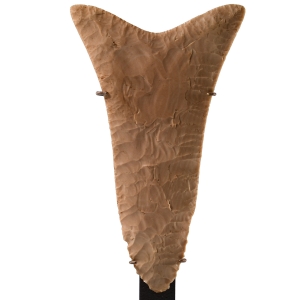
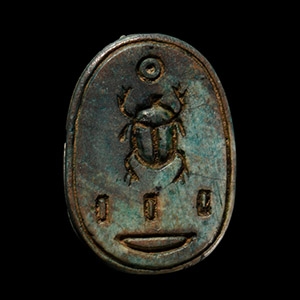
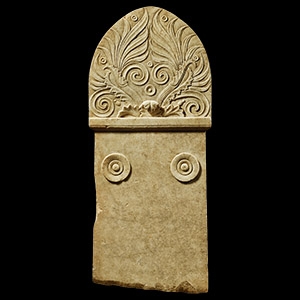
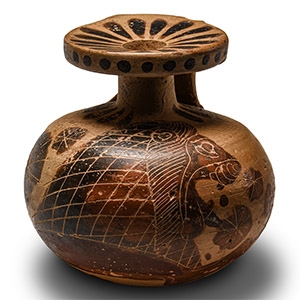
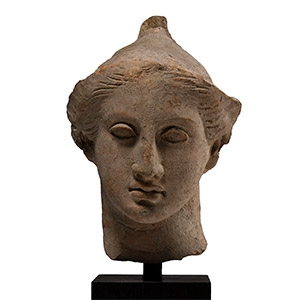
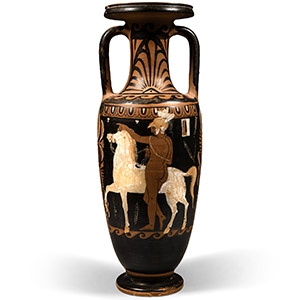
.jpg)
.jpg)
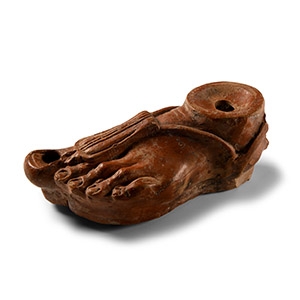
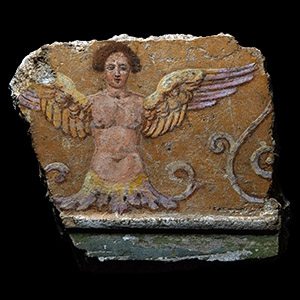
.jpg)
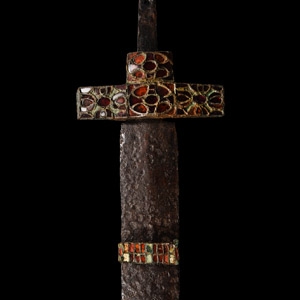
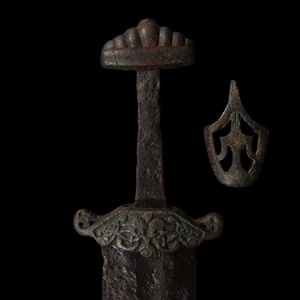
.jpg)
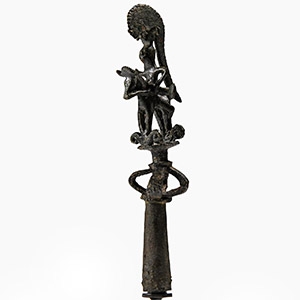


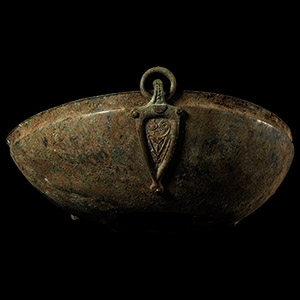
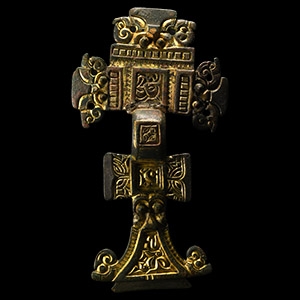
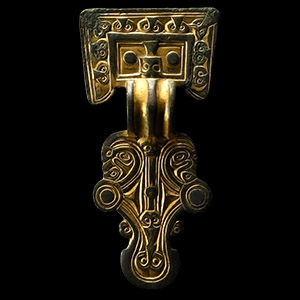
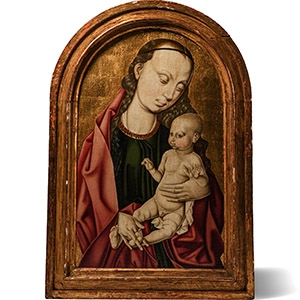

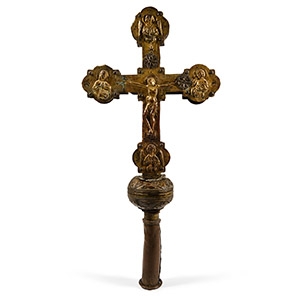
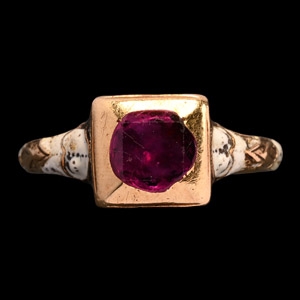
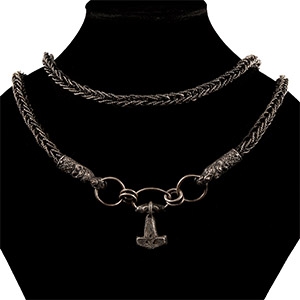
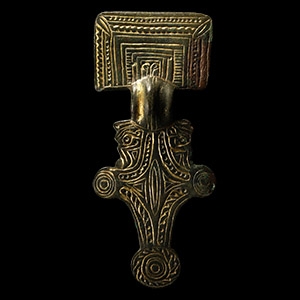
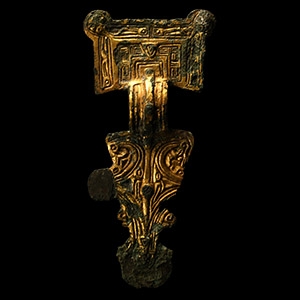
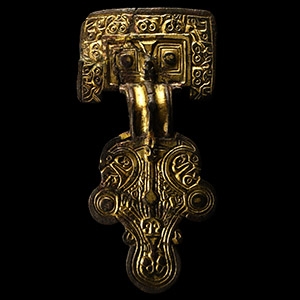
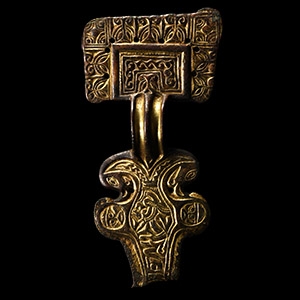

.jpg)
